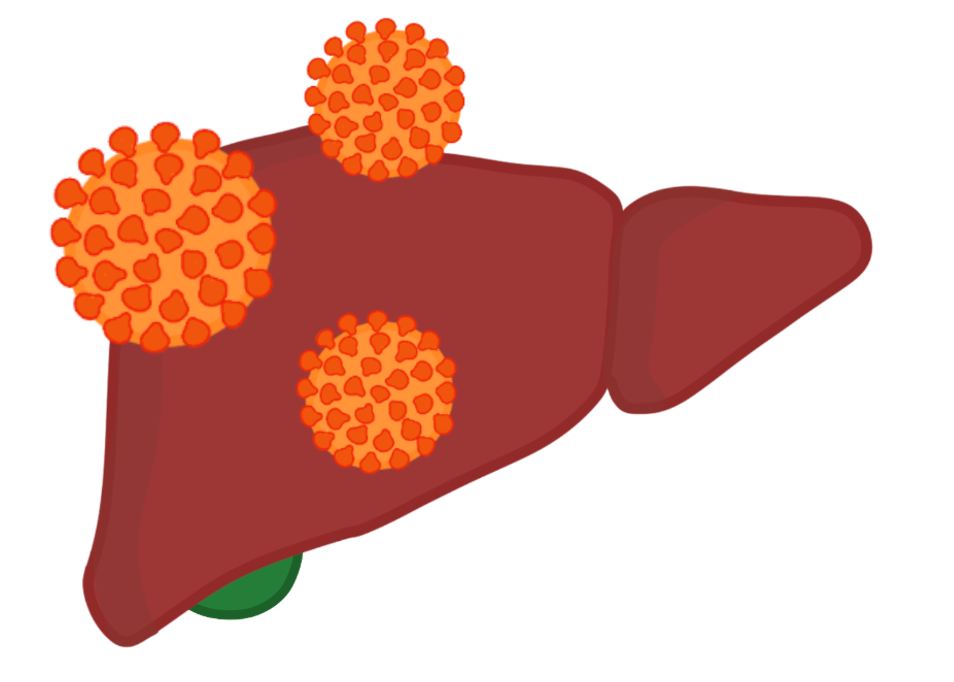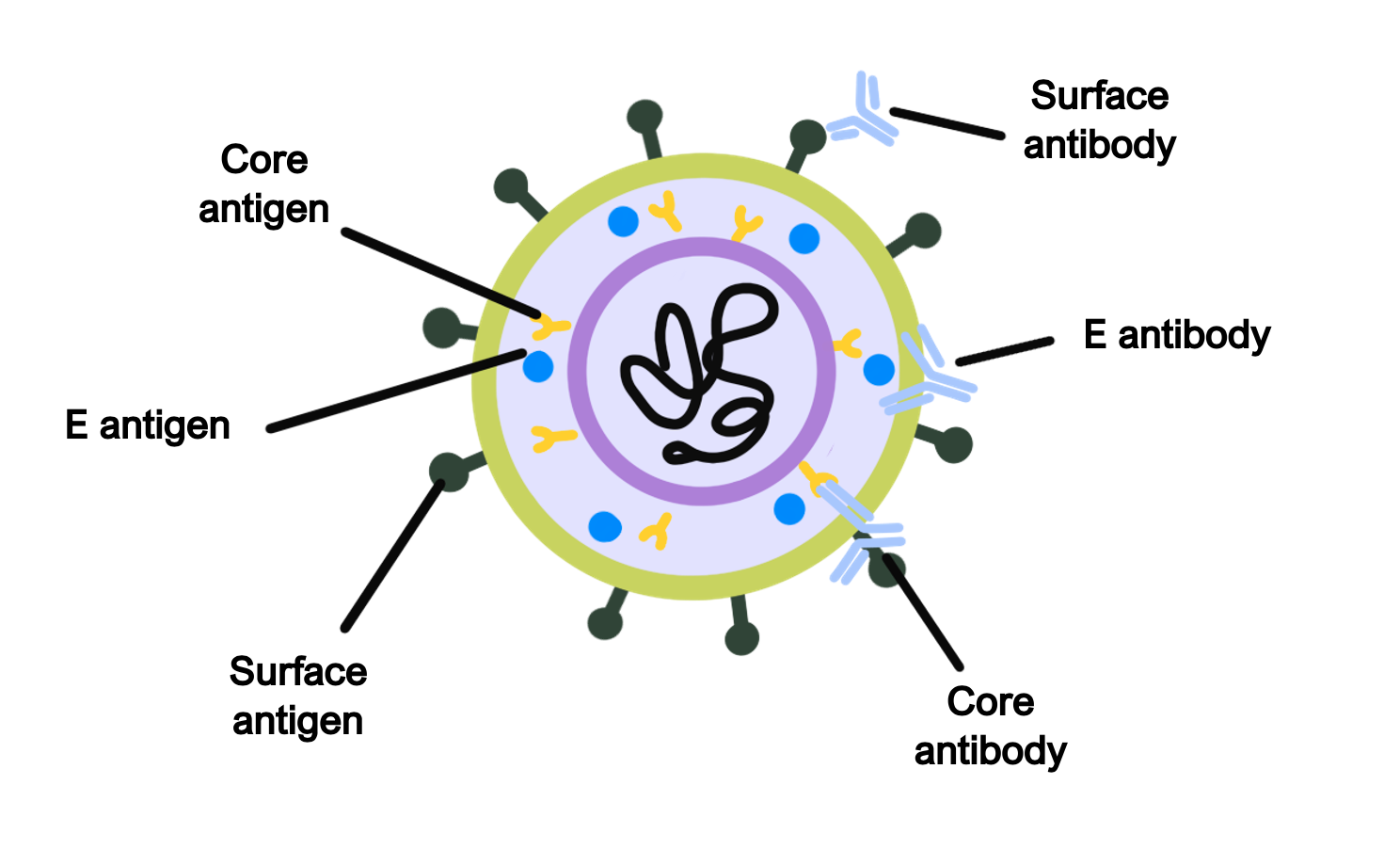This is a viral infection of the hepatocytes which leads to inflammation. It can cause acute and chronic symptoms
Acute
This refers to inflammation of the liver which usually resolves within 6 months.
It causes jaundice (mixed conjugated and unconjugated bilirubin) with dark urine.
Also causes fever, tender hepatomegaly, nausea and weight loss.
Blood tests show very elevated LFTs (ALT > AST).
However, it can be asymptomatic with elevated LFTs.
Chronic
This is characterised by elevated LFTs for > 6 months.
It may be initially clinically silent, but usually progresses to liver cirrhosis.

Hepatitis A
This is an RNA virus which has faeco-oral transmission.
It is seen in travelers returning from developing countries.
It typically produces a flu-like prodrome before signs of acute hepatitis (tender hepatomegaly and jaundice) but does not typically cause chronic disease.
Symptoms
Gives a flu-like prodrome
Signs of acute hepatitis – tender hepatomegaly and jaundice
Key tests
Hepatitis serology: raised IgM marks active infection, but IgG is detectable for life
Management
Supportive treatment as it resolves spontaneously
Hepatitis A vaccination is encouraged for patients travelling to developing countries
Hepatitis B (HBV)
This is a DNA virus transmitted through bodily fluids, blood and breastfeeding.
There is a vaccine available for hepatitis B, but no cure is available.
It causes an acute hepatitis but can then continue to give a chronic infection, resulting in liver cirrhosis with a high risk of hepatocellular carcinoma.
Complications include polyarteritis nodosa and glomerulonephritis.
Risk factors
Intravenous Drug Use
Blood transfusion
Sexual intercourse
Transmission mother to baby
Symptoms
Acute hepatitis first
Chronic infection – leads to liver cirrhosis and hepatocellular carcinoma
Can cause polyarteritis nodosa and glomerulonephritis

Key tests
Using the rules, you can work out whether patient is acute, chronic, recovered or vaccinated
a) HBsAg surface antigen is first marker to rise – only detectable when the virus is actively present
b) Anti-HBsAg is human antibody against HBsAg – implies immunity, either vaccination or recovered
c) Anti-HBc is the core antibody – it is only made in response to an infection, not a vaccine.
It is divided into IgG and IgM – the IgM is only detectable in acute infection whereas the IgG is detectable for life

Management
Antiviral therapy – pegylated interferon and nucleoside analogues
Hepatitis C (HCV)
This is an RNA virus which is spread through intravenous drug use, blood transfusion and sexual intercourse. There is no vaccine for hepatitis C, but a cure is available.
It does not cause an acute infection, usually only causing a chronic hepatitis.
If left untreated, it leads liver cirrhosis with a high risk of hepatocellular carcinoma.
Risk factors
Intravenous drug use
Blood transfusion
Sexual intercourse
Transmission mother to baby
Symptoms
Patients can get fatigue or mild pain but usually just causes a silent chronic infection (>6 months)
If untreated, will lead to liver cirrhosis and hepatocellular carcinoma
Key tests
Serological testing for anti-hepatitis C antibodies indicates exposure to virus
Can also do PCR testing for hepatitis C RNA
Management
Anti-viral therapy e.g., hepatitis C protease inhibitors, ribavirin.
Hepatitis D (HDV)
This is an incomplete RNA virus which is dependent on HBV for infection.
It is spread by the exchange of bodily fluids and can cause a fulminant hepatitis, a rare syndrome of rapid (within days or weeks) massive necrosis of the liver parenchyma and decrease in liver size, leading to hepatic failure and encephalopathy.
Symptoms
If superinfection (gets Hep D after Hep B) leads to fulminant hepatitis and cirrhosis
Key tests
PCR of hepatitis D RNA
Management
Interferon or liver transplant
Hepatitis E
This is an RNA virus which is also spread faecoorally like hepatitis A.
It is common in South-East Asia, Africa, and Mexico, where it is transmitted by contaminated food, e.g., shellfish and undercooked pork products.
Like hepatitis A, it leads to an acute hepatitis rather than chronic disease.
However, in pregnant women, it can lead to fulminant hepatitis.
Symptoms
Acute hepatitis symptoms
However, in pregnant women gives fulminant hepatitis – liver failure with massive necrosis
Key tests
Testing for the presence of antibody against HEV or HEV RNA
Management
Usually self-resoling and does not progress to chronic hepatitis

